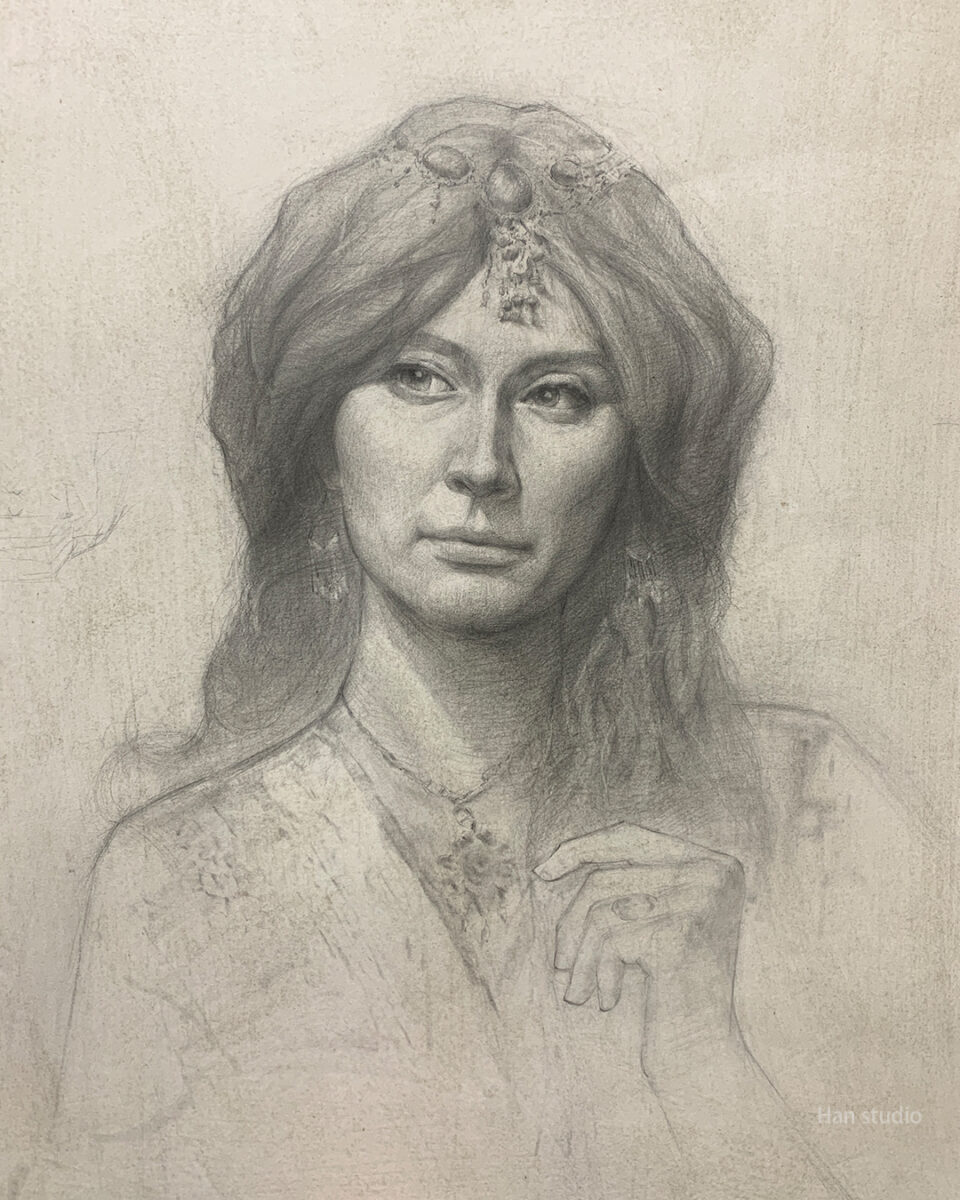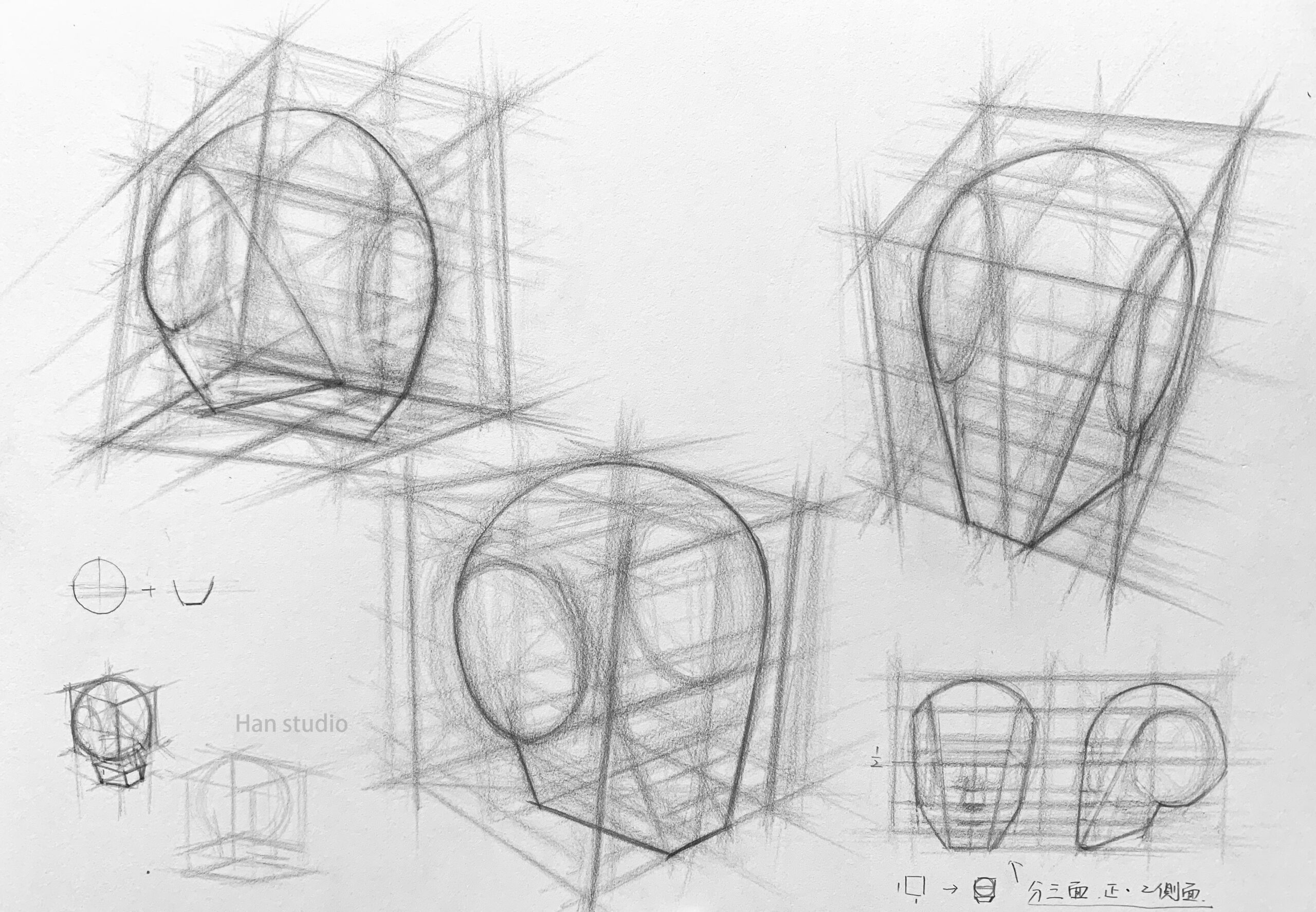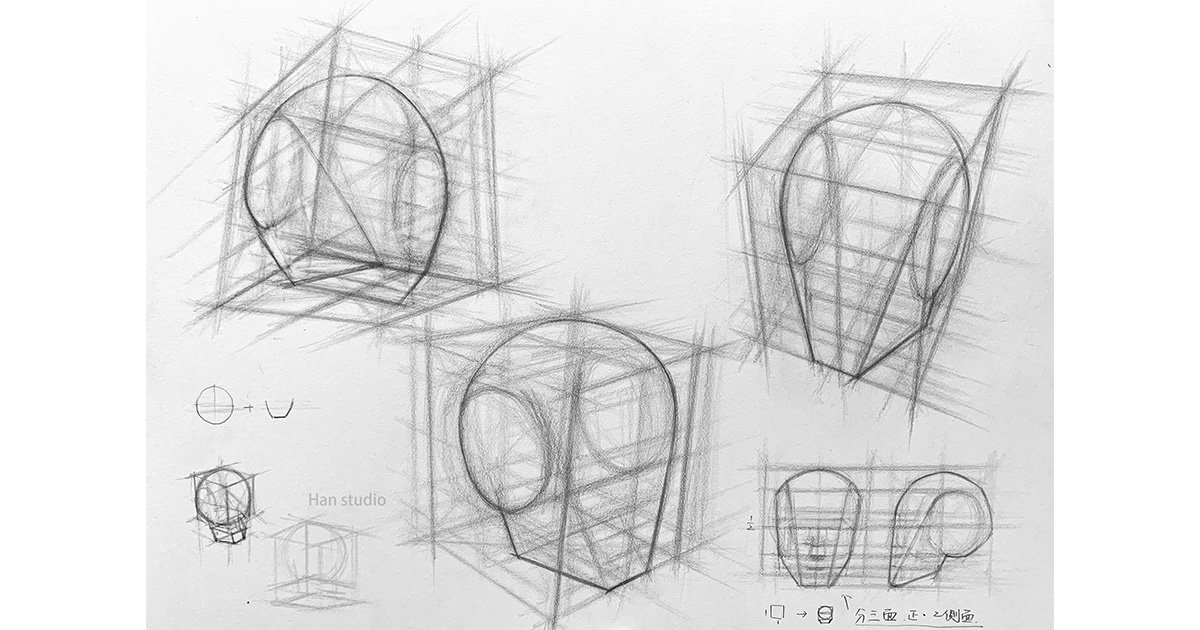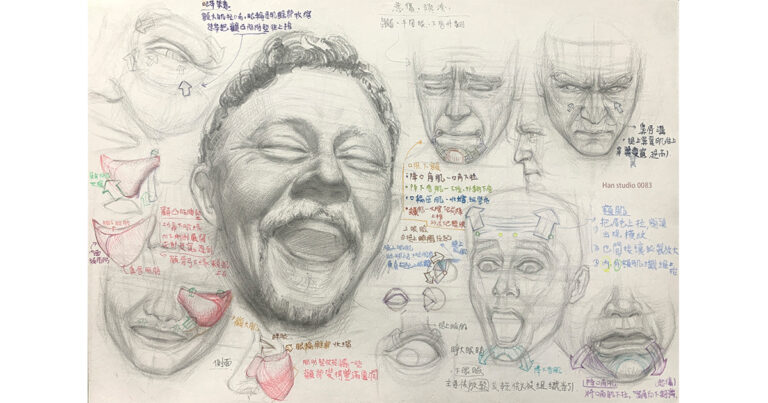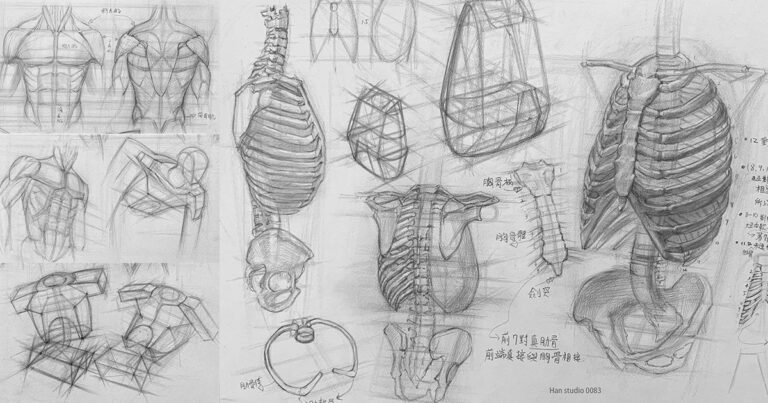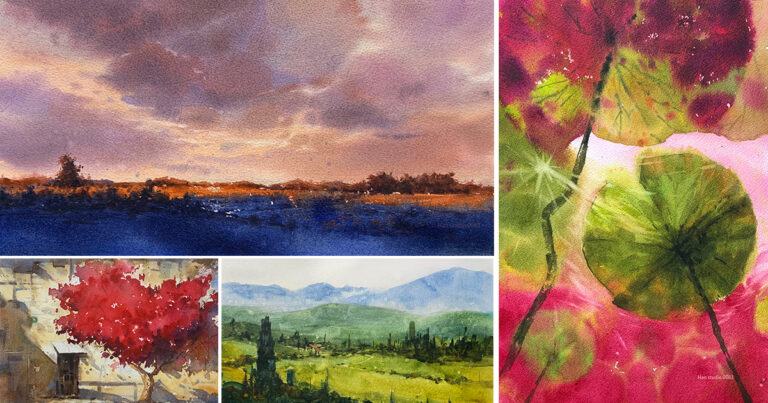Documenting this portrait practice session, I got to know a Romanian friend, and I'm most impressed by their ability to use trilled R's—how can they say so many words without their tongue cramping up?
The second image shares a simplified model of the head from different angles. If you're interested in learning about portrait proportions and structure, keep reading!
●Basic Shapes:
We can think of the head as being composed of a circle and an inverted trapezoid. The circle represents the skull, and the inverted trapezoid represents the jaw. Refer to the small diagram in the lower left corner.

●Proportions:
1.The height of the head is approximately 1.5 times the width.
2.The ears are positioned on the centerline.
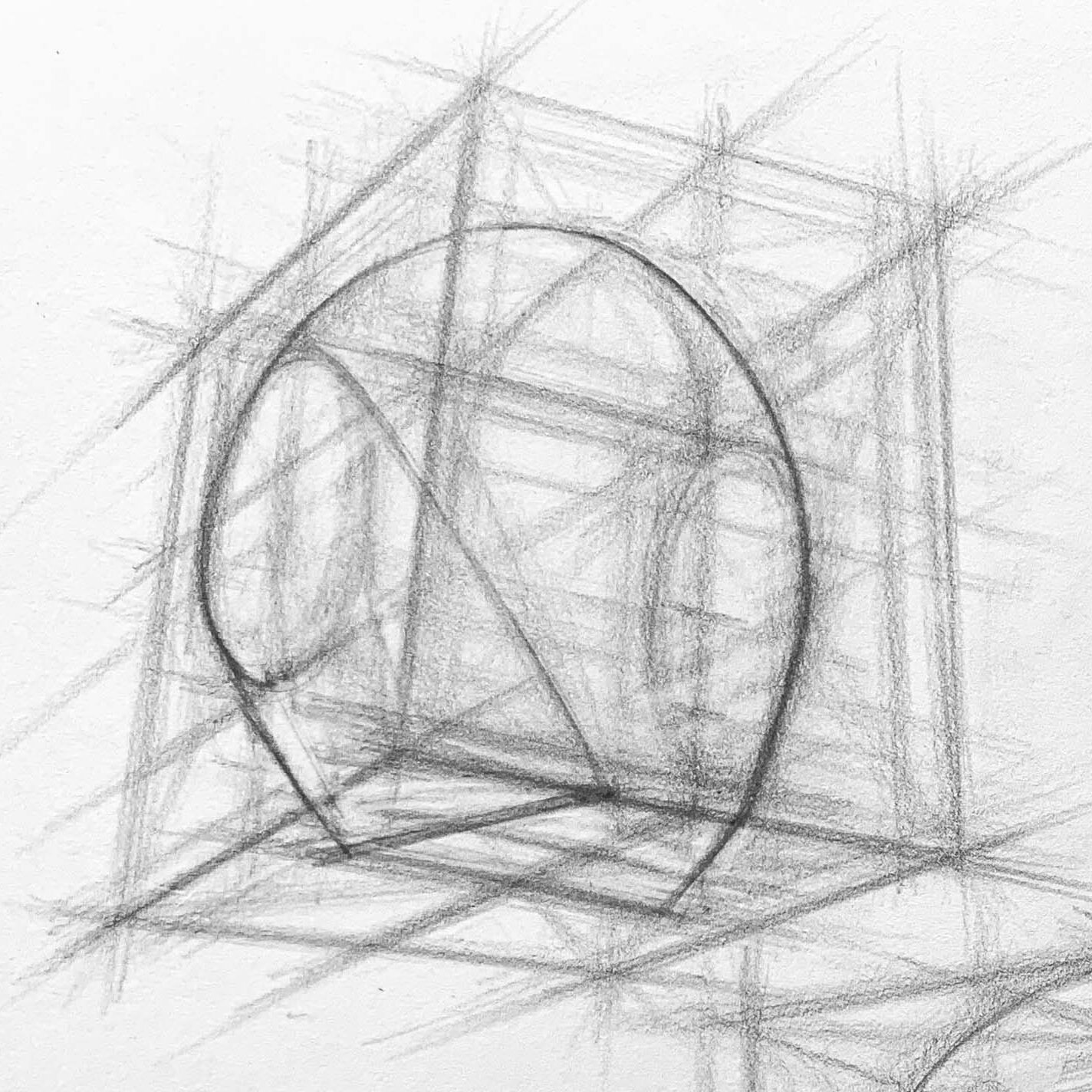
3.The eyes are located about halfway up the total height of the head.
4.The base of the nose is roughly one-third of the way down from the top of the head.
●How to Draw the Head Structure:
1.Initial Sketch:
Look at the small diagram in the lower right corner for a front and side view analysis. Note that the overall proportion is approximately 1:1.3, with the front view being slightly narrower.
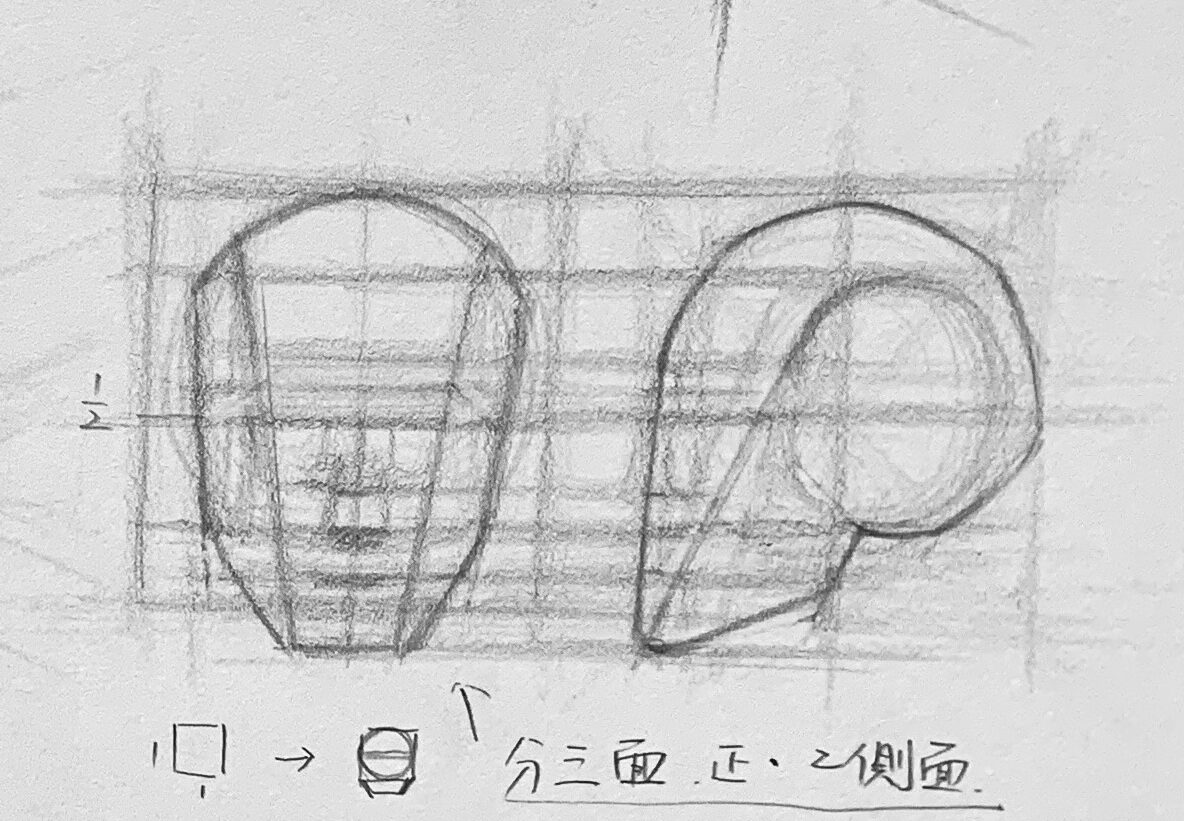
Start with simple geometric shapes. Draw a circle to represent the skull, then add an inverted trapezoid for the jaw.
Determine the height and width of the head, using guidelines to mark the positions of the eyes, nose, and mouth according to the proportions provided above.
2.Perspective Grid Aid:
After understanding the head proportions, try using a perspective grid to draw the head from different angles. Note that the centerline of the face will shift as the head turns.
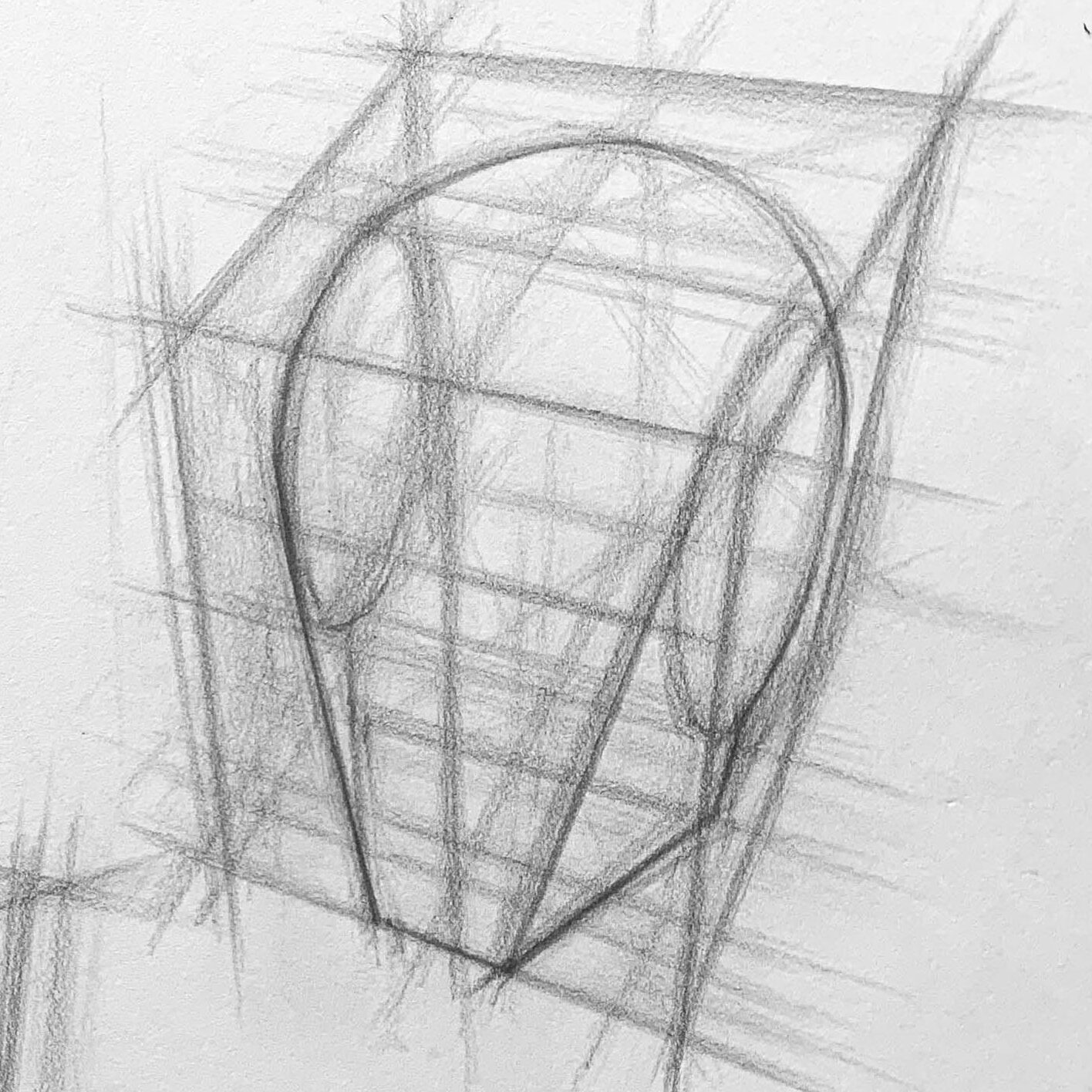
For example, in the second image in the middle, the head is facing right, so the centerline is more to the right (there's more of the left side of the face and less of the right side).
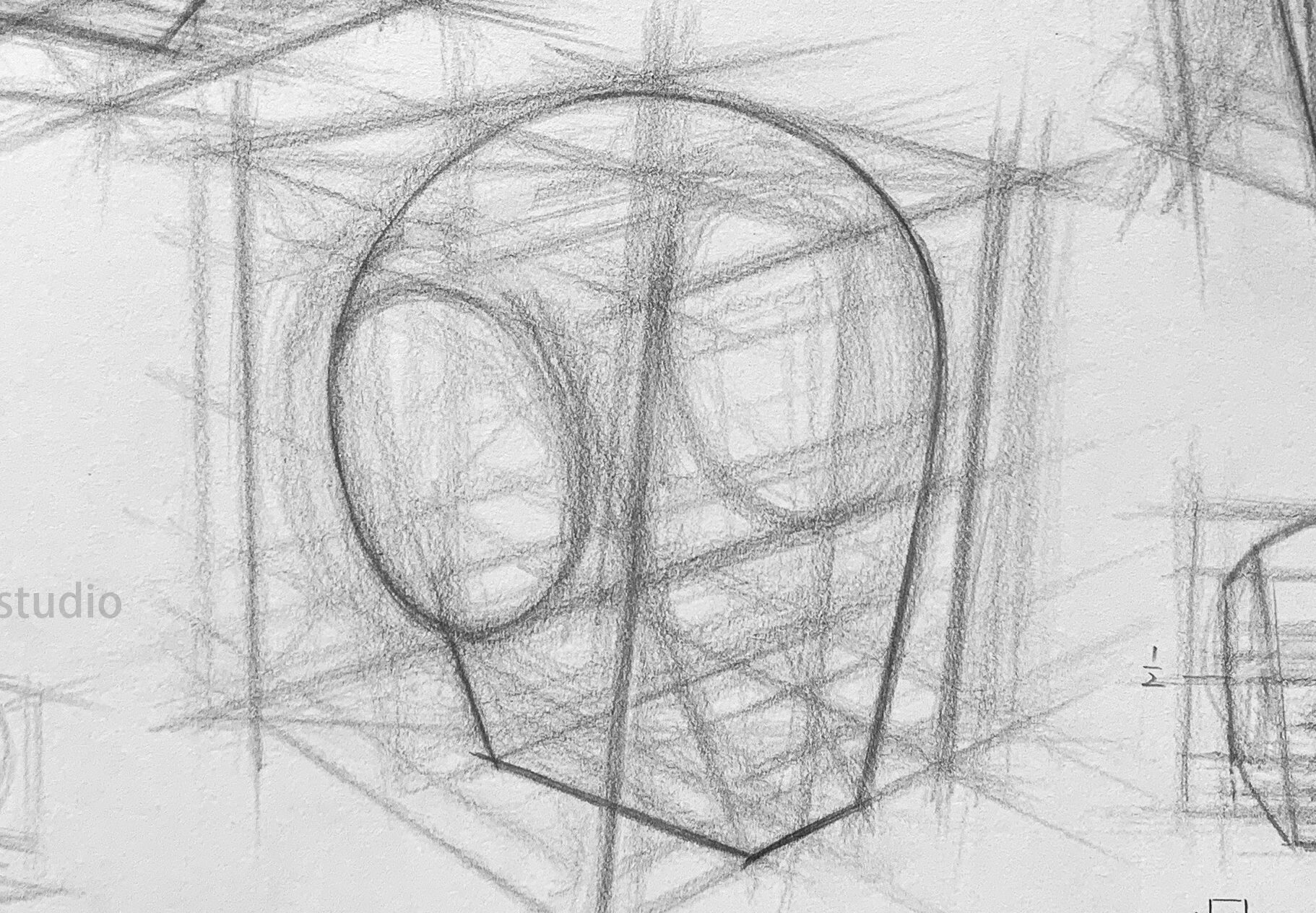
I hope this introduction helps you understand how to draw the head structure. If there are any topics or drawing techniques you'd like to see, feel free to leave a comment or message me. Happy drawing!
If you're interested in learning to draw but don't know where to start, or if you'd like to understand the knowledge behind drawing,
feel free to join my LINE and contact me. In my classes, I organize drawing methods in a clear and structured way.
Click here to learn more about my drawing courses!
Want to learn how to draw human body parts and understand the key points? Check out the following further reading:
Human Skull Sketch: Learn Anatomy for Accurate Portraits
How to Draw Arms: Learn Arm Movements and Bone Proportions
How to Draw Ears:Simplified Ear Structure and Shading Tips
How to Use Two-Tone Shading: Simple Shadow Techniques
How to Sketch Facial Muscles: Capture Realism and Expression
Understanding the Three Key Elements of Head Structure
How to Accurately Master Hand Proportions and Joint Structure
Mastering Nose sketch Structure and Perspective Techniques
Building Up from Simple Contours to Detailed Eye Portraits
Capturing Realism in Lip Drawing: Key Structures and Shading
